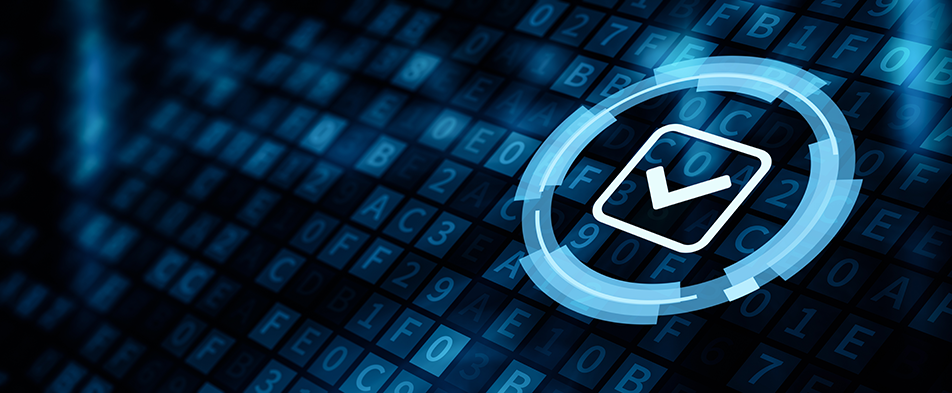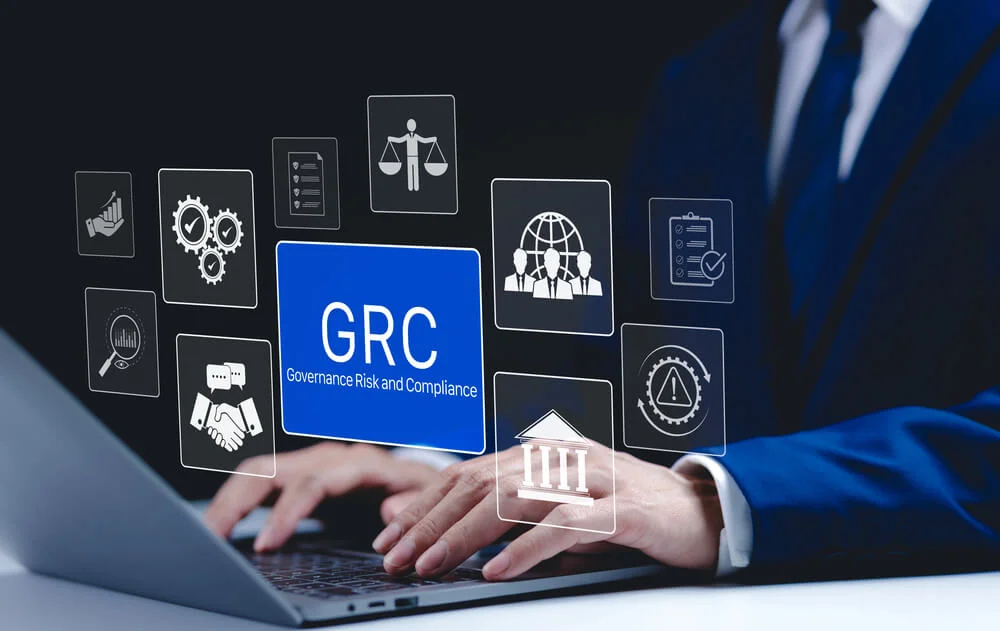In today’s digital landscape, organizations face numerous security challenges that can jeopardize sensitive data and customer trust. To mitigate these risks, many businesses opt for third-party audits and certifications to demonstrate their commitment to security. One widely recognized certification is the SOC 2 (Service Organization Control 2) report, which evaluates an organization’s controls over security, availability, processing integrity, confidentiality, and privacy. However, it’s essential to understand that while a SOC 2 report provides valuable insights, it alone may not guarantee complete safety and customer assurance. In this blog, we will explore the limitations of relying solely on a SOC 2 report and discuss additional measures organizations should consider for robust security.

Understanding the Scope of a SOC 2 Report
A SOC 2 report assesses an organization’s internal controls related to security, availability, processing integrity, confidentiality, and privacy. It evaluates the design and operational effectiveness of these controls, providing valuable information about the organization’s security posture. However, it’s crucial to recognize that a SOC 2 report is based on a specific point in time and has defined scope and limitations.
Understanding the scope of a SOC 2 report is crucial to interpreting its findings accurately. Here’s a further explanation of the scope of a SOC 2 report:
Trust Services Criteria
A SOC 2 report is based on the Trust Services Criteria developed by the American Institute of Certified Public Accountants (AICPA). These criteria consist of five broad categories: security, availability, processing integrity, confidentiality, and privacy. The scope of the report determines which of these criteria are included in the assessment.
Design and Operating Effectiveness
A SOC 2 report evaluates both the design and operating effectiveness of an organization’s controls. The design effectiveness refers to the suitability and soundness of the control measures in place, while operating effectiveness assesses whether those controls are implemented and operating effectively to achieve their intended objectives. The report provides an opinion on the extent to which controls are designed and operating effectively within the defined scope.
System Boundary
The scope of a SOC 2 report defines the system boundary or the specific services, processes, or systems being assessed. It clarifies the boundaries within which the controls are evaluated and provides insights into the security measures in place for those specific areas. It’s important to understand what is included and excluded from the scope to avoid making assumptions about the overall security of the organization.
Limited Assurance
A SOC 2 report provides a level of assurance but is not a guarantee of security or compliance. The report typically includes the auditor’s opinion, which may state that the controls were suitably designed and operating effectively, with specific exceptions and qualifications if any were identified. The level of assurance provided in the report should be considered in the context of the organization’s risk tolerance and the sensitivity of the data being protected.
Timeframe
SOC 2 reports are conducted at a specific point in time or over a defined period. The report’s effectiveness may diminish over time as new risks and vulnerabilities emerge. Organizations should consider the currency of the report and whether any significant changes have occurred in their systems or controls since the evaluation was conducted.
Service Organization vs. User Entity
SOC 2 reports are primarily intended to provide assurance to users of a service (e.g., customers, business partners) about the service organization’s controls. The report is not designed to assess the controls of user entities or how they interact with the service organization’s systems. User entities may have their own compliance obligations and may need to consider additional assessments to ensure end-to-end security.
By understanding the scope of a SOC 2 report, including the specific criteria, system boundary, limitations, and timeframe, organizations can accurately interpret the findings and make informed decisions about their overall security strategy. It’s essential to supplement the SOC 2 report with additional security measures tailored to the organization’s specific needs and risks

Limitations of SOC 2 Reports
While a SOC 2 (Service Organization Control 2) report is a valuable tool for evaluating an organization’s security controls and demonstrating a commitment to data protection, it’s important to recognize its limitations. A SOC 2 report provides insights into the design and operating effectiveness of controls related to security, availability, processing integrity, confidentiality, and privacy. However, it is crucial to understand that relying solely on a SOC 2 report may not provide a complete picture of an organization’s security posture. In this blog post, we will delve into the limitations of a SOC 2 report, exploring areas where it may fall short and why additional security measures are necessary for robust protection and customer assurance. By understanding these limitations, organizations can make informed decisions and augment their security strategies to effectively safeguard their data and meet evolving threats.
Trust Services Criteria
A SOC 2 report is based on the Trust Services Criteria developed by the American Institute of Certified Public Accountants (AICPA). These criteria consist of five broad categories: security, availability, processing integrity, confidentiality, and privacy. The scope of the report determines which of these criteria are included in the assessment.
Design and Operating Effectiveness
A SOC 2 report evaluates both the design and operating effectiveness of an organization’s controls. The design effectiveness refers to the suitability and soundness of the control measures in place, while operating effectiveness assesses whether those controls are implemented and operating effectively to achieve their intended objectives. The report provides an opinion on the extent to which controls are designed and operating effectively within the defined scope.
System Boundary
The scope of a SOC 2 report defines the system boundary or the specific services, processes, or systems being assessed. It clarifies the boundaries within which the controls are evaluated and provides insights into the security measures in place for those specific areas. It’s important to understand what is included and excluded from the scope to avoid making assumptions about the overall security of the organization.
Limited Assurance
A SOC 2 report provides a level of assurance but is not a guarantee of security or compliance. The report typically includes the auditor’s opinion, which may state that the controls were suitably designed and operating effectively, with specific exceptions and qualifications if any were identified. The level of assurance provided in the report should be considered in the context of the organization’s risk tolerance and the sensitivity of the data being protected.
Timeframe
SOC 2 reports are conducted at a specific point in time or over a defined period. The report’s effectiveness may diminish over time as new risks and vulnerabilities emerge. Organizations should consider the currency of the report and whether any significant changes have occurred in their systems or controls since the evaluation was conducted.
Service Organization vs. User Entity
SOC 2 reports are primarily intended to provide assurance to users of a service (e.g., customers, business partners) about the service organization’s controls. The report is not designed to assess the controls of user entities or how they interact with the service organization’s systems. User entities may have their own compliance obligations and may need to consider additional assessments to ensure end-to-end security.
By understanding the scope of a SOC 2 report, including the specific criteria, system boundary, limitations, and timeframe, organizations can accurately interpret the findings and make informed decisions about their overall security strategy. It’s essential to supplement the SOC 2 report with additional security measures tailored to the organization’s specific needs and risks.

Supplementing SOC 2 Reports with Additional Security Measures
While a SOC 2 report provides valuable insights into an organization’s security controls, it should not be the sole basis for ensuring comprehensive protection and customer assurance. To strengthen security and address potential gaps, organizations should consider implementing additional security measures. Here are some key areas to focus on:
Regular Vulnerability Assessments and Penetration Testing
Supplementing a SOC 2 report with regular vulnerability assessments and penetration testing is crucial for identifying and addressing potential weaknesses in systems and applications. These proactive measures can help uncover vulnerabilities that may not have been captured during the SOC 2 assessment. By conducting regular assessments, organizations can stay ahead of emerging threats and enhance their overall security posture.
Incident Response and Disaster Recovery Plans
While a SOC 2 report may evaluate an organization’s incident response capabilities, having a well-defined incident response plan and robust disaster recovery strategies are essential for effectively managing security incidents. These plans outline the steps to be taken in the event of a breach, ensuring swift response and minimizing the impact of disruptions. Regularly testing and updating these plans can help organizations remain resilient in the face of security incidents.
Ongoing Security Monitoring
Continuous monitoring of systems, networks, and user activities is vital to detect and respond to security incidents in real-time. This monitoring can help identify anomalous behavior, unauthorized access attempts, or potential data breaches. By implementing robust security monitoring tools and processes, organizations can quickly mitigate threats and take proactive measures to protect sensitive data.
Compliance with Industry Standards
While a SOC 2 report demonstrates adherence to the Trust Services Criteria, complying with industry-specific standards adds an extra layer of assurance. Standards such as ISO 27001 (Information Security Management System) or HIPAA (Health Insurance Portability and Accountability Act) provide comprehensive frameworks for managing and protecting sensitive data. Aligning with these standards demonstrates a commitment to industry best practices and can enhance customer trust.
Employee Training and Awareness Programs
Human factors remain a significant challenge in ensuring overall security. SOC 2 reports may assess the existence of employee training programs, but organizations should go further by implementing comprehensive training and awareness initiatives. These programs educate employees on best practices, potential threats, and their role in maintaining a secure environment. By cultivating a security-conscious culture, organizations can significantly reduce the risk of social engineering attacks and human errors.
Third-Party Audits and Certifications
In addition to SOC 2 reports, organizations can consider seeking third-party audits and certifications specific to their industry or compliance requirements. These audits provide independent validation of security controls and can enhance customer confidence. Examples include PCI DSS (Payment Card Industry Data Security Standard) for organizations handling payment card data or FedRAMP (Federal Risk and Authorization Management Program) for government cloud service providers.
By supplementing SOC 2 reports with these additional security measures, organizations can create a more comprehensive and robust security framework. These measures address potential limitations of a SOC 2 report, cover a wider range of security aspects, and help organizations adapt to evolving threats. Ultimately, by going beyond the scope of a SOC 2 report, organizations can enhance their security posture, gain a competitive advantage, and provide customers with a higher level of assurance.





